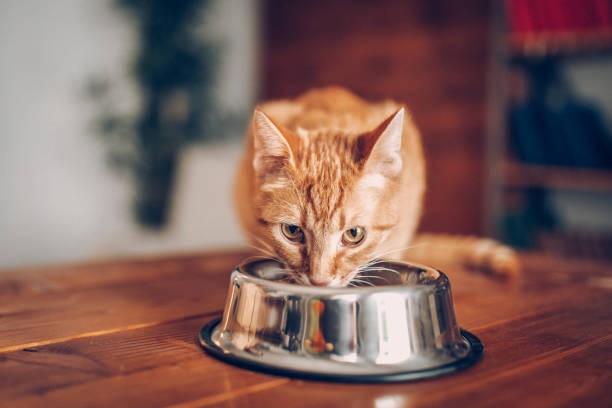Every year in autumn and spring, the time has come again: the beloved kitty changes its coat. With our four tips, you can make the procedure much easier for your sweetheart.
The change of coat of our most popular pet, the cat, is a year-round issue. The free-living or outdoor cats build up a thick winter coat due to the shorter days and the decreasing temperatures in autumn. On the longer and warmer days in spring, they lose this when they change their coat.
With artificial lighting and heating, these regulating factors are almost eliminated in our pets, which is why they always shed. Therefore, it is essential to provide them with everything they need for a beautiful, healthy coat and thus support their coat change.
1. Cat diet

Optimal nutrition helps avoid skin and coat problems, especially during the change of coat. A balanced diet includes high-quality proteins, amino acids, vitamin B, omega-6, and omega-3 fatty acids. For this purpose, there is special “Hair & Skin” dry food in the feed trade, which contains these substances in the right composition. You should give this food to your cat while it is changing its coat.
Omega fatty acids are also found in good, cold-pressed oils such as linseed oil, rapeseed, or safflower oil. Adding vegetable oils to high-quality complete feed is very useful when changing hair.
Care should be taken with dosing because too much oil can quickly lead to diarrhea. (We’ll tell you the four most common reasons for diarrhea in cats here). Specialist shops have a special mixture of different, tasteless oils that can be added to the food. Due to the high bioavailability of the substances contained, a low daily dose is sufficient. The success, shiny hair, and a full coat, are already visible after a short time.
2. Cat grooming

During the cat’s daily extensive grooming, the cat licks its coat with its damp and rough tongue. Since a particularly large amount of hair would end up in the stomach during hair changes, you should brush your pet daily to minimize the amount of hair. These can solidify in the stomach to form an impenetrable hairball, which can lead to severe digestive disorders and even dangerous gastric obstruction.
3. The right brush

For short-haired cats, regular brushes with nylon or natural bristles are sufficient, while you should have a fur curler on hand for long-haired and long-haired cats.
If the fur is free of tangles and easy to comb, you should use a so-called furminator, which removes any additional loose hair.
Such a relaxing, playful massage improves blood circulation in the cat’s skin and promotes hair growth and strengthens the loving relationship between humans and animals.
4. Cat grass

The cat should always have fresh cat grass available so that the hair swallowed during grooming does not remain in the stomach but can be gagged out without any problems.
The cat grass, which can be bought in specialist shops, can be sown outdoors in summer or grown in a planter on the windowsill. By making the pet eat, cat grass is very useful. Cat grass pills have a similar effect.




